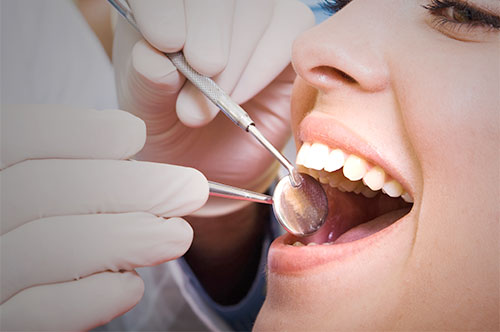Dr. Young, Cindy, and the rest of the team are absolutely wonderful! They have provided me outstanding dental care for over 12 years. I’m always greeted with a smile and called by my first name. I always feel relaxed and comfortable no matter the reason for my visit. I can appreciate Dr. Young and his team because they truly care about my overall wellbeing. Everyone is so personable and makes time to speak to me. They are simply the best!

Flossing is not likely at the top of your to-do list. Between busy mornings and late-night fatigue, it’s easy to skip. But flossing does more than just remove food; it helps protect your gums, reduce plaque buildup, and prevent decay between teeth where toothbrushes can’t reach. If flossing feels awkward or ineffective, you’re not alone. The good news? An updated simple flossing technique can make this habit easier, faster, and more worthwhile. Here’s how to floss smarter—not harder:
1. Floss Before You Brush for a Cleaner Finish
Most people floss after brushing, but flipping the order may actually give you better results. Flossing first helps dislodge plaque and debris between teeth, so your toothbrush and toothpaste can reach more surfaces. It also ensures that the fluoride from your toothpaste gets between your teeth more effectively.
Plus, when you floss first, you’re more likely to remember to do it, before the sleepiness (or distractions) set in. Try making it the first step in your nighttime routine and see how much fresher your mouth feels.
2. Use Enough Floss—and the Right Technique
One of the biggest flossing mistakes? Using too little floss. A short strand doesn’t give you enough clean surface area and can make maneuvering between teeth more difficult.
Use about 18 inches of floss—yes, really. Wrap it around your middle fingers, leaving about one to two inches to work with between your thumbs and forefingers. Slide the floss gently between your teeth and curve it in a C-shape around each tooth, making sure to go just under the gumline.
Avoid snapping the floss straight down, which can damage your gums and make the experience uncomfortable. Gentle, controlled movement is key.
3. Struggling With Traditional Floss? You’ve Got Options
If traditional string floss is difficult due to dexterity issues, braces, or just plain frustration, there are great alternatives. Floss picks are handy for on-the-go use or quick routines, while water flossers use a gentle stream to clean between teeth and below the gumline.
Interdental brushes are another excellent option, especially for people with wider gaps or gum recession. The important thing is to find a method that works for you and stick with it daily.
Your dentist or hygienist can demonstrate different techniques and help you find the tool that best fits your needs.
4. Consistency Is More Important Than Perfection
You don’t have to be perfect at flossing—you just have to do it. Like any habit, the more consistent you are, the more benefit you’ll get. Flossing once a day is enough to make a real difference in your gum health, especially when paired with regular brushing and professional cleanings.
If you miss a day, don’t give up. Just pick up where you left off and keep going. Your gums will thank you.
Want help improving your flossing technique? Our dental team is here to guide you with personalized tips and tools that make flossing easier and more effective. Book your next appointment and let’s keep your smile strong from every angle.
Call Brassfield Dental in Greensboro, NC at 888-363-8692 for an appointment or request an appointment online.



